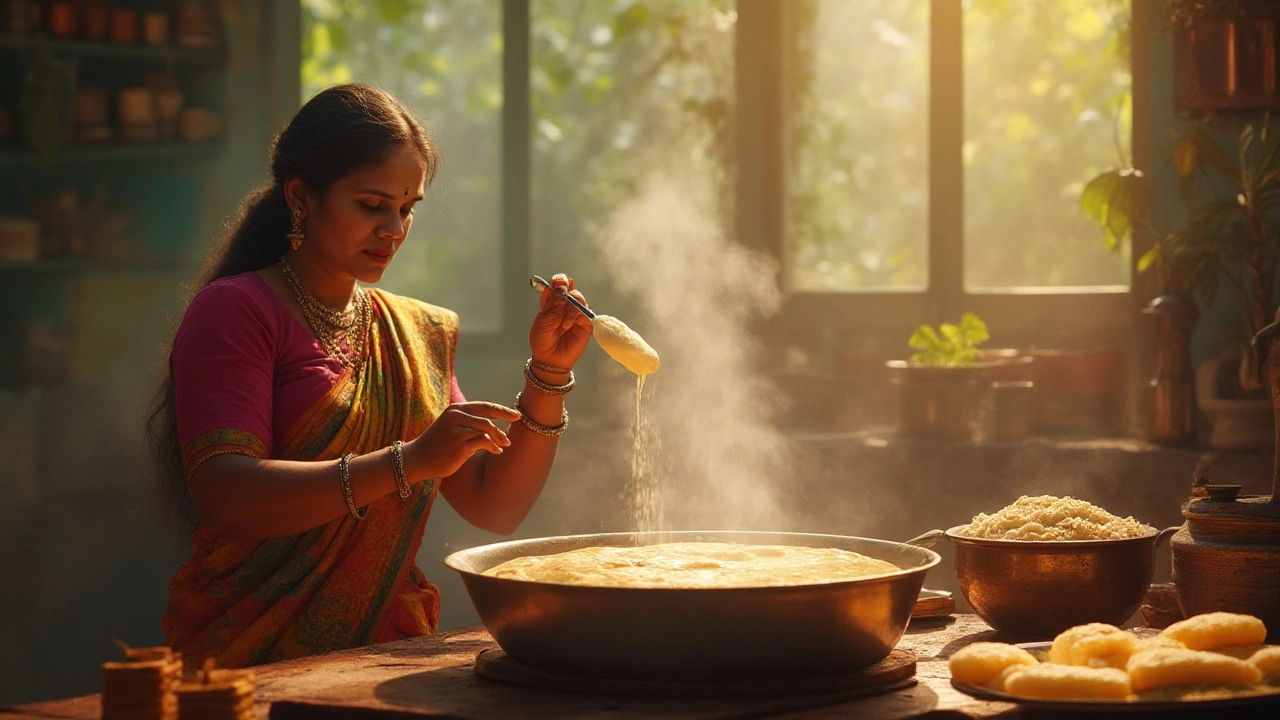Curd in Dosa Batter: Boost Fermentation, Fluffiness & Flavor
When working with curd in dosa batter, the practice of mixing fresh curd into the rice‑lentil batter to jump‑start souring. Also known as yogurt, it supplies natural acids and live cultures that speed up fermentation, the conversion of starches into lactic acid by bacteria. The base dosa batter, a blend of soaked rice and urad dal ground into a smooth paste benefits from this boost, while a pinch of baking soda, an alkaline leavening agent can puff the batter for extra airy dosas. In short, curd in dosa batter intertwines souring, fermentation, and leavening to create crisp‑yet‑soft pancakes loved across South Indian cooking, the regional cuisine that popularized dosas. Curd in dosa batter enhances fermentation, fermentation requires lactic acid bacteria, and baking soda influences fluffiness – three simple facts that change the whole texture.
Why curd makes the batter sing
Adding curd wires in a steady flow of lactic acid that lowers the batter’s pH. A lower pH creates a friendlier environment for good bacteria, the lactobacilli that ferment the batter, which in turn produces more CO₂ bubbles. Those bubbles are the secret behind the soft holes you see on a perfectly cooked dosa. If you skip curd, the batter still ferments but takes longer, and the flavor stays flat. One tablespoon of curd per cup of rice‑dal mix can cut fermentation time by half and give the batter a pleasant tang that balances the earthy rice taste. The tang also masks any slight bitterness from over‑fermented batter, keeping the final dosa bright and inviting.
Another plus is the moisture curd adds. Fresh curd is about 80 % water, so it thins the batter just enough for a smooth spread on the hot pan. Too thick, and the dosa sticks; too thin, and it spreads too far, turning brittle. The right consistency lets the batter sit on the pan, bubble, and then crisp up without burning. Combine that with a dash of baking soda, which releases extra CO₂ when heated, and you get those puffed edges that make every bite feel light. The soda’s alkaline nature also neutralizes a bit of the acidity from the curd, preventing the dosa from becoming overly sour while still retaining its fresh zing.
Timing matters, too. Ideally, add curd after the initial 8‑hour fermentation period, then let the batter rest another 4‑6 hours. This two‑stage approach gives the lactobacilli a head start, then lets the curd’s cultures finish the job. If you’re in a hurry, you can speed things up with a warm spot (around 30 °C) or a quick 30‑minute microwave “proof” where you place the batter covered for a short burst of heat. Just remember: hotter environments accelerate bacterial activity, but they can also cause the batter to over‑sour if left too long.
Putting these pieces together – curd, fermentation, baking soda, and the right rice‑dal ratio – creates a reliable formula for fluffy, tasty dosas. Below you’ll find articles that dive deeper into each component: why some cooks swear by a splash of lemon instead of curd, how to troubleshoot a batter that won’t rise, and tricks for storing fermented batter without losing its power. Whether you’re a beginner just starting your first batch or a seasoned home chef fine‑tuning your technique, the posts ahead cover the whole spectrum, giving you practical steps to perfect your dosa every time.

Why Do We Add Curd to Dosa Batter? Science, Tips, and Real Flavor
Ever wondered why curd goes into dosa batter? Hauntingly simple, the answer packs a punch. Get the science, tips, and real flavor secrets of dosa here.